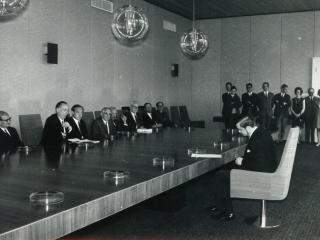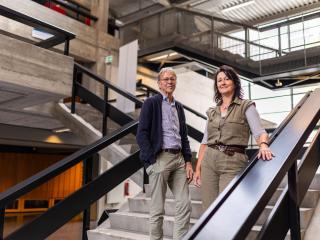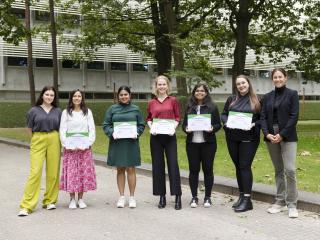From relief fund for unemployed academics to TIAS School for Business and Society
In the fall of 1983, the Relief Fund for Academic Research by Unemployed Academics (Steunfonds Wetenschappelijk Onderzoek Werkloze Academici) was established at what was then called the Tilburg Catholic Academy. Professors Harry Peeters and Hans Adriaansens from the Psychology Department had come up with the idea because of the high unemployment rates among graduate students in the 1970s and 1980s and the success of a similar project for newly graduated engineers at Wageningen Agricultural College that had been set up in 1981.
The objective of the Tilburg project was to raise funds through the business sector where unemployed graduates could conduct PhD and other research for the duration of four years, while retaining unemployment benefit. In addition, the fund paid them an allowance for housing and research costs. The research projects would be supervised by Tilburg professors and they were to focus mainly on ‘the problems of today's society, the change of norms, values, behavior, and mentality’. The Tilburg scholars who pioneered the fund felt that this subject was not being sufficiently studied and also that the results of earlier research had been addressed too much from socio-economic or political-party points of view.
Diogenes becomes Tilburg Institute for Academic Studies
The fund, that was initially called Diogenes, was renamed the Tilburg Institute for Academic Studies, or TIAS for short, in 1984. The institute succeeded in setting up a partnership with the Brabant-Zeeland Employers’ Association and in convincing the Dutch Ministry of Education to subsidize the project. The latter was inspired in part by the fact that Education Minister Deetman saw an experimental role for TIAS in the so-called ‘two-phase structure’: students had to graduate in four years (the first phase) and could continue in PhD research and education in the second phase. To that end, a dedicated School of the Humanities and Social Sciences (School van Mens- en Maatschappijwetenschappen) was set up within TIAS, as well as a number of practical training courses to improve graduate employability. The Tilburg Catholic Academy hoped that the business community would be willing to co-finance this. Above all, the Ministry of Education saw this neoliberal approach as a good opportunity to save costs on post-graduate education.
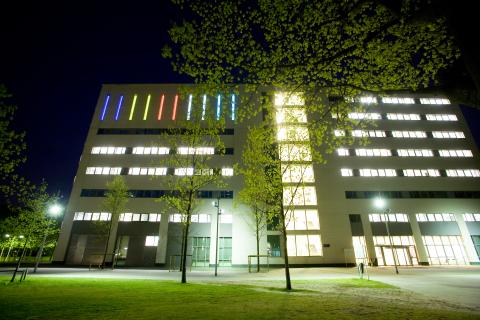
The TIAS building dates from 1998 and was designed by Belgian architect Christian Kieckens (1951-2020). It has been the home of the business school from the beginning.
When it dawned upon the Academy’s Executive Board that it might have hit gold with TIAS, the fund further professionalized. Management support was provided and the Secretary of the School of Arts became the director of TIAS. Herman Wijffels, a member of the managing board of Rabobank at the time, invited TIAS to explain its plans for post-graduate education and research for a broad group of representatives from the business sector. In addition, a separate executive board was set up for TIAS.
Disappointing intake figures
Still, it took Tilburg University, as it was now called, some time to get used to being in such close contact with the business sector. It was a new situation, that originated in the changing relationship between university and society, according to founding father Harry Peeters. With the launch of the post-academic programs of Banking & Finance and Management Information in September 1986, Tilburg University was the first Dutch university to offer a complete curriculum for the two-phase structure. Despite high expectations, however, interest in the programs was very disappointing. Only fourteen students enrolled in the first program, twenty in the second. Three new programs scheduled to be launched were postponed because of unsatisfactory enrollment figures. This was thought to be due to the excessive tuition fees even though, for the first five years, between ten and fifteen million guilders had been set aside for the TIAS initiative. In 1987, the Labour & Organisation (later Management & Organization) program was launched, with fourteen students, and the Corporate Training program (later Consultancy Training) with twelve students.
There were several reasons for the low intake figures. First of all, TIAS was not very well-known yet, not even among the companies that would have to pay for the training of their employees. The temporary unavailability on the work floor of personnel receiving training also played a role. The part-time nature of the programs partly met this need, but on the other hand it meant that hardly any foreign students enrolled, whereas the hope had been that they would be a good source of income. And then there was ambiguity about the position and independence of TIAS. Who would have to foot the bill if the results continued to disappoint?
It is characteristic of this special institution at Tilburg University that it was always thinking in terms of growth and new training opportunities
Staff development
Despite these difficult beginnings, TIAS seemed to have anticipated developments in the field of education well. More and more companies saw the need to allow their staff to further develop, even though there was a price tag. At the end of the 1980s, the Tilburg educational institution continued to have the monopoly of post-graduate professional training at university level within Dutch academia. That the universities of applied sciences looked upon this development with distrust is understandable, since, after all, they targeted the same market. The additional funding provided by the Ministry of Education ensured a more solid financial basis. In 1991, TIAS had more than 200 students, who had the choice of not less than nine programs. In addition to the four already mentioned, these included Policymaking in Non-Profit Organizations, EDP Auditing, Financial & Economic Management, Government Accounting, Transport & Logistics Management, and Legislative Drafting. In the academic year 1992-1993, Manufacturing Management and Strategy & Management of Organizations in Healthcare were added.
Still, there were concerns about the future of TIAS, because the institution’s positive financial result was due in large part to government subsidies that would be discontinued after 1992. Also, enrollment was rather skewed. By far the most students were enrolled in the Management Information (40 participants) and EDP Auditing programs (35 participants), while the other programs were struggling. An internal equalization fund ensured that the underperforming programs could continue for the time being.
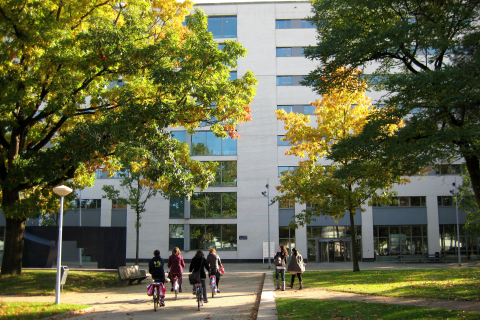
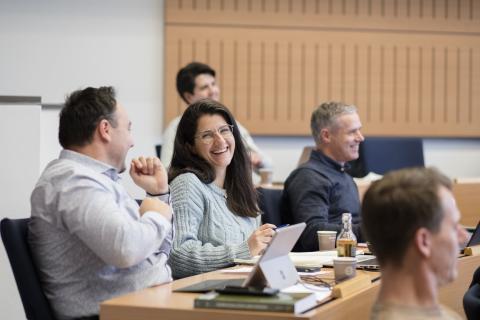
Cause for celebration
At the end of 1994, TIAS had cause for celebration: the thousandth participant had enrolled and TIAS took up residence in new offices on the Tilburg campus. It is characteristic of this special institution at Tilburg University that it was always thinking in terms of growth and new training opportunities. In 1994, while Harry Peeters was still in office, TIAS expressed the ambition ‘to become the largest and best Dutch institute for long-term post-graduate training and short courses or in-company training for middle and senior management.’ The latter meant that the instructor came to the company to teach tailor-made in-house management courses. This approach to corporate training was quite common abroad, but was still fairly new to the Netherlands. By latching on to international developments and by engaging leading instructors (also from abroad), TIAS hoped to realize its high ambitions of Center of Excellence. The idea behind this was to create a flywheel effect and brand awareness, as a result of which large companies would invest in TIAS, among other things, by sending their workers to TIAS for training.
Verzelfstandiging TIAS
In 1996, Professor Philippe Naert succeeded Harry Peeters as TIAS’ director; the institute further professionalized and internationalization was boosted. Naert had been affiliated to various international and leading management institutions and he had a large network in the business community, which TIAS tapped into. Under his leadership, the idea of making TIAS an institute for postgraduate management training got off the ground. Naert wished TIAS to compete with well-known Master of Business Administration (MBA) programs at big international universities. To this end, the name was changed in 1997 in Tilburg Institute for Advanced Studies, so the acronym could continue to be used. In order to compete, TIAS worked towards a more autonomous position within Tilburg University. It wanted to continue as an autonomous and financially independent institution for contract education. This required a modification of the organizational structure. The TIAS Commission and the institute’s Executive Board had to be replaced by a Supervisory Council (that acted as a Supervisory Board), an International Advisory Council, and a Board of Directors. The latter consisted of a professor-director (who was also a Dean) and a managing director. Both Tilburg University’s Executive Board and the University Council saw quite a few issues with respect to TIAS’ ambitious plan. They were afraid that the connection with the university would be eroded, that by attracting international lecturers, the position of the university’s own professors would be compromised, and that TIAS establishing its own school would give rise to competition. After the necessary negotiations and guarantees, the Tilburg University Executive Board finally decided in favor of the corporatization of TIAS as the TIAS Business School in 2001. The university owned all the shares in the closed corporation, with a "remote" supervisory structure. It proved to be an effective move: in 2000, 1410 students enrolled, divided over four programs and, two years later, the TIAS Business School was voted the second best MBA program in the Netherlands.
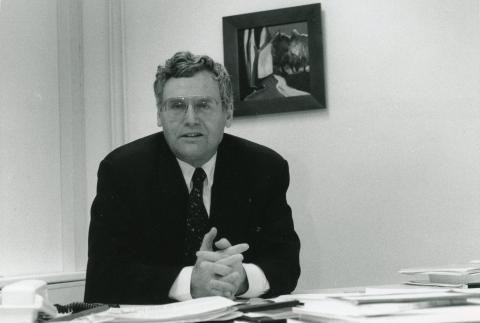
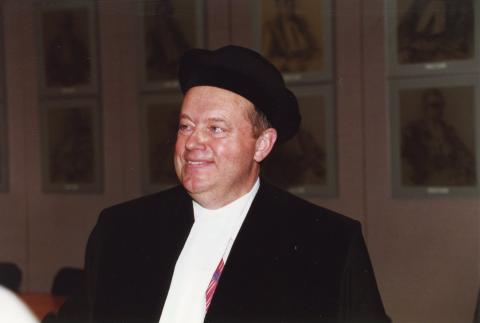
Harry Peeters, year unknown (Tilburg University photo collection).
Philippe Naert at his inaugural address in 1997 (Tilburg University photo collection).
'A breeding ground for leadership'
At present, the various executive programs of the TIAS School for Business and Society are among to the best in the Netherlands and the institute also does well in global rankings. A great achievement for an institute that started in 1983 as a relief fund for unemployed academics. "In the years of growth and challenges, TIAS has developed into a breeding ground for leadership. We are not just a business school; we are a school for business and society. Our dedication to educating 'leaders of tomorrow' is the driving force behind our commitment to transition as the solution to the complex issues ahead," said alumnus Jenke ter Horst Dean & Director TIAS School for Business & Society.
Date of publication: 17 november 2023

